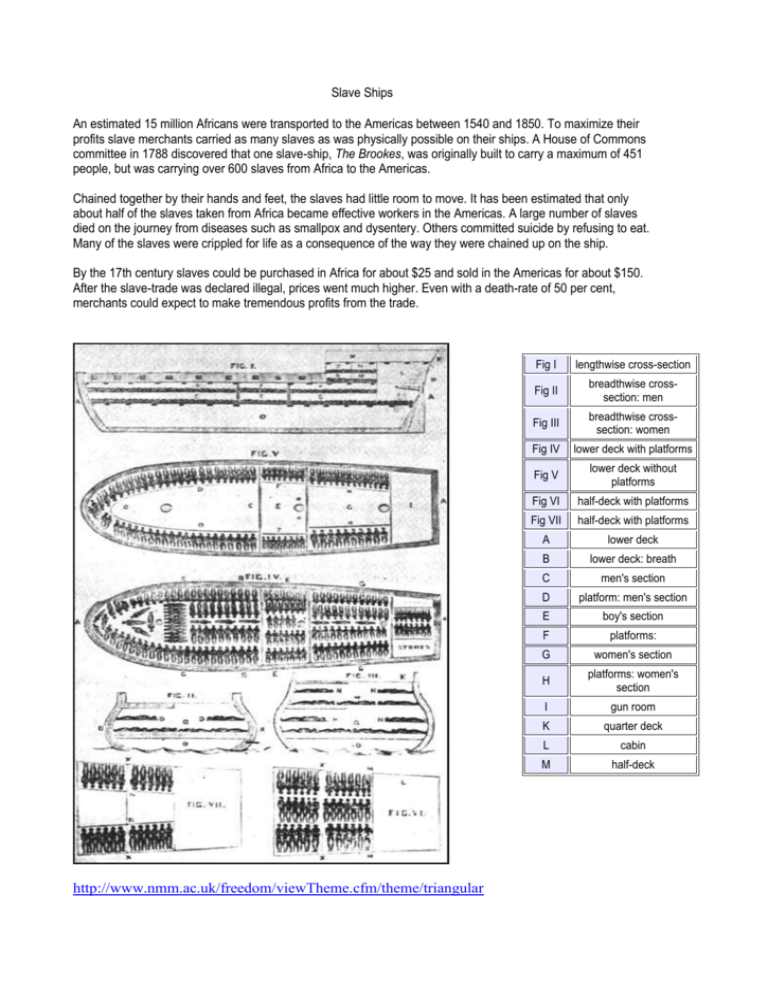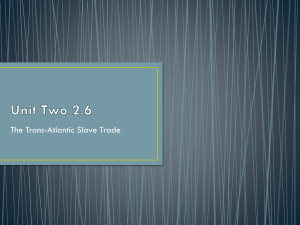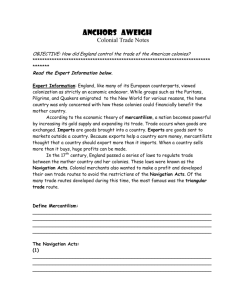Slave Ships
advertisement

Slave Ships An estimated 15 million Africans were transported to the Americas between 1540 and 1850. To maximize their profits slave merchants carried as many slaves as was physically possible on their ships. A House of Commons committee in 1788 discovered that one slave-ship, The Brookes, was originally built to carry a maximum of 451 people, but was carrying over 600 slaves from Africa to the Americas. Chained together by their hands and feet, the slaves had little room to move. It has been estimated that only about half of the slaves taken from Africa became effective workers in the Americas. A large number of slaves died on the journey from diseases such as smallpox and dysentery. Others committed suicide by refusing to eat. Many of the slaves were crippled for life as a consequence of the way they were chained up on the ship. By the 17th century slaves could be purchased in Africa for about $25 and sold in the Americas for about $150. After the slave-trade was declared illegal, prices went much higher. Even with a death-rate of 50 per cent, merchants could expect to make tremendous profits from the trade. http://www.nmm.ac.uk/freedom/viewTheme.cfm/theme/triangular Fig I lengthwise cross-section Fig II breadthwise crosssection: men Fig III breadthwise crosssection: women Fig IV lower deck with platforms Fig V lower deck without platforms Fig VI half-deck with platforms Fig VII half-deck with platforms A lower deck B lower deck: breath C men's section D platform: men's section E boy's section F platforms: G women's section H platforms: women's section I gun room K quarter deck L cabin M half-deck








